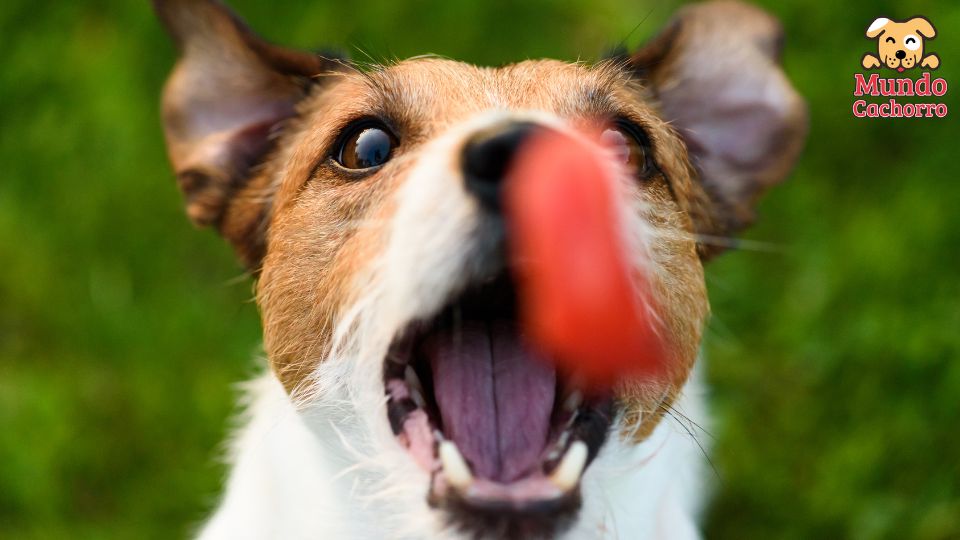Training a pet may seem like a challenging task, but with the right techniques, it can become a rewarding experience for both the owner and the animal. Positive reinforcement has established itself as one of the most effective and gentle strategies for pet training, whether it is a dog, cat or even a bird. This method not only promotes fast and effective learning, but also strengthens the bond between you and your pet, fostering a relationship based on trust and mutual respect.
Indice
What is positive reinforcement?
Positive reinforcement is a training technique that is based on rewarding the pet when it performs the desired behavior. By offering a reward, such as a treat, petting, or praise, after your pet follows a command or performs an appropriate action, you are incentivizing it to repeat that behavior in the future. This method is contrary to punishment, which attempts to suppress unwanted behavior by imposing negative consequences.
The key to positive reinforcement is in the association the pet makes between the reward and the action. If every time your dog sits when you ask him to he gets a treat, he will quickly learn that sitting on command is a positive thing. This creates a learning cycle where the animal is motivated to behave well because he knows he will receive something good in return.
Benefits of positive reinforcement
Positive reinforcement offers numerous benefits for both the pet and the owner. First, this method of training is ethical and humane, as it does not involve the use of fear, pain or intimidation. By focusing on rewarding good behavior rather than punishing bad behavior, training becomes an enjoyable experience for both.
Another important benefit is the creation of a stronger bond between owner and pet. By using positive reinforcement, your pet not only learns to follow commands, but also learns to trust you and see you as a source of affection and security. This not only facilitates training, but also contributes to a more harmonious coexistence in the home.
Positive reinforcement also encourages creativity in training. You can use a variety of rewards to keep your pet motivated and engaged. From treats and toys to extra playtime, there are many ways to keep training fun and effective.
How to apply positive reinforcement correctly
For positive reinforcement to be truly effective, it’s important to apply it correctly and consistently. Here are some tips for using this technique efficiently:
- Immediate reward: The reward should follow the desired behavior immediately. This helps the pet understand what action is being rewarded. If there is a delay, the association between the action and the reward can be lost.
- Be consistent: Use the same command and reward for each behavior you want to teach. Consistency is key for your pet to learn effectively.
- Varied rewards: While treats are an excellent form of reward, you can also use praise, toys, or playtime. Vary the rewards to keep your pet interested and motivated.
- Avoid over-rewarding: While it’s tempting to offer lots of rewards, it’s important not to overfeed your pet with treats, especially if you’re training a dog. Balance food rewards with other types of rewards to avoid health problems.
- Don’t punish mistakes: If your pet doesn’t follow a command or makes a mistake, don’t resort to punishment. Instead, ignore the incorrect behavior and offer positive reinforcement when it performs the correct action. This helps to avoid stress and confusion in the animal.
Successful cases with positive reinforcement
.
Positive reinforcement is not just a theory, but a practice that has proven effective in countless cases. Many pet owners have successfully trained their animals using this technique, from teaching basic commands to solving complex behavioral problems.
For example, a dog that had problems with anxiety and destruction at home learned to behave appropriately thanks to positive reinforcement. By rewarding him for calm behaviors and teaching him to associate his bed with a safe and positive place, his owner was able to significantly reduce his anxiety and the destructive behaviors disappeared.
Another successful example is training cats to use a harness and walk on a leash. Through positive reinforcement, cats, who are usually more independent and difficult to train, can learn to enjoy walks outdoors, as long as each small advance is rewarded appropriately.
Final thoughts
Positive reinforcement is a powerful and ethical tool that can transform your pet’s training into a positive and effective experience. Through rewards, patience and consistency, you will not only get your pet to learn new behaviors, but you will also strengthen the bond between the two of you. This method not only teaches obedience, but also fosters an environment of trust, love and mutual respect.
If you are looking for an effective and compassionate way to train your pet, positive reinforcement is definitely the way to go. With time and dedication, you will find that any pet, regardless of age or personality, can learn and thrive under this gentle and effective approach.








